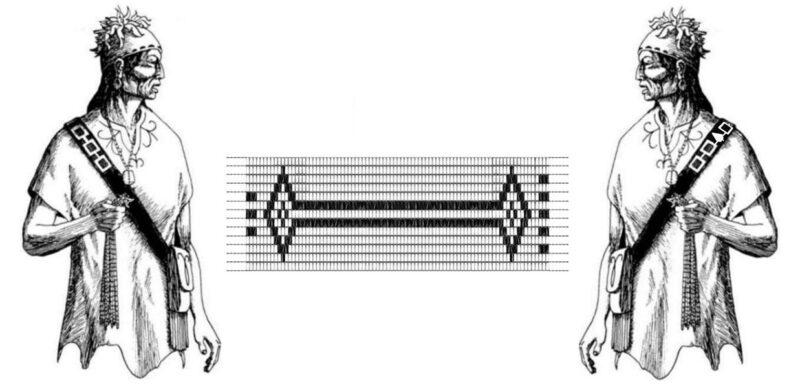Early History
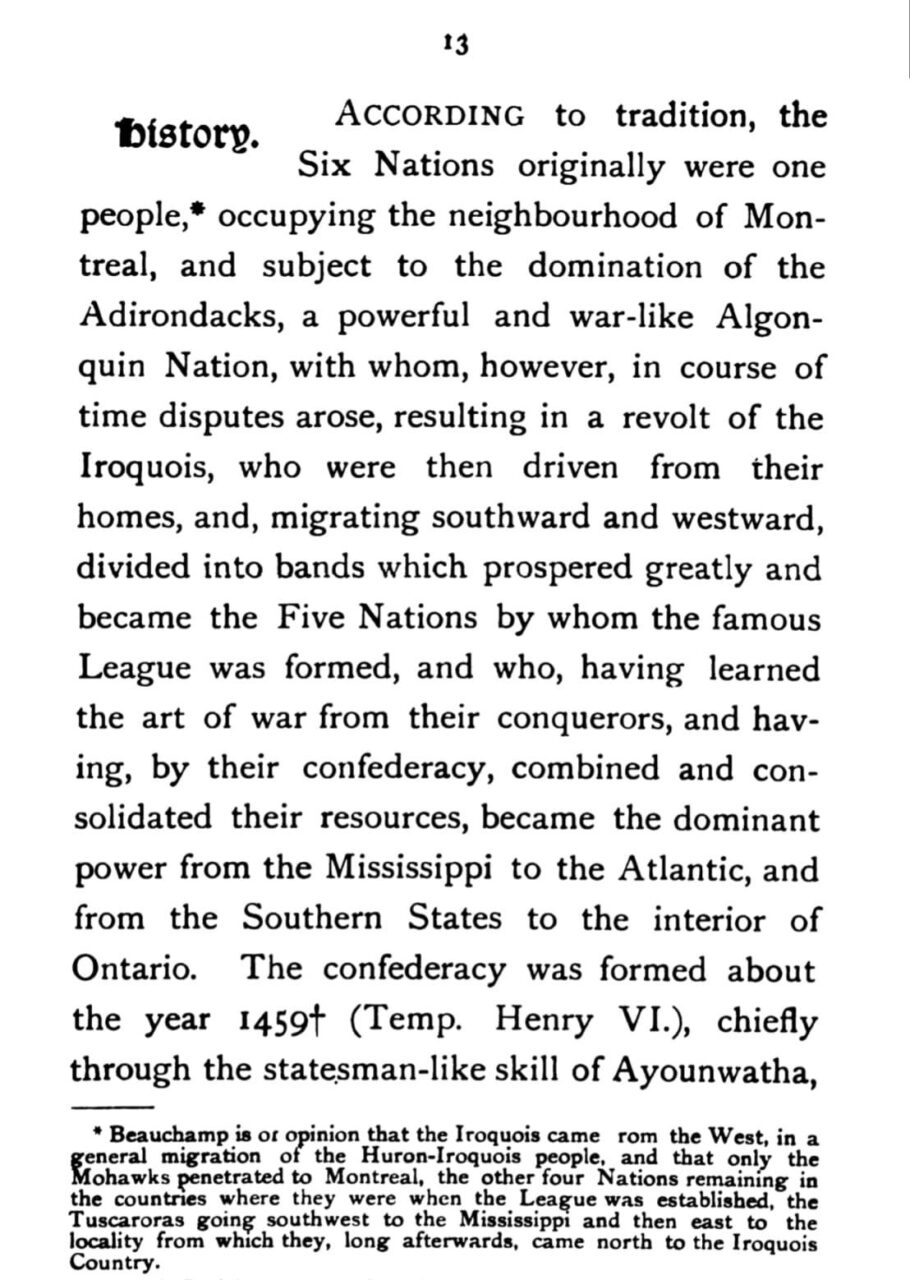
The People of the Longhouse
By Edward Marion Chadwick
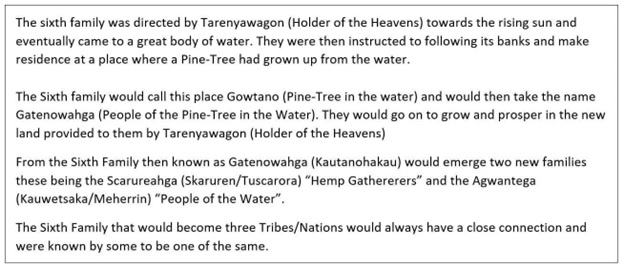
Note: David Cusick (Tuscarora) was the first one to publish some of this Oral Tradition. Back in 1828.
The Tuscarora were more then aware of the Nottoway people, and would have included them in this Oral Tradition if they were part of it. Because they were not mentioned meant their migration as a people happened at a different time.
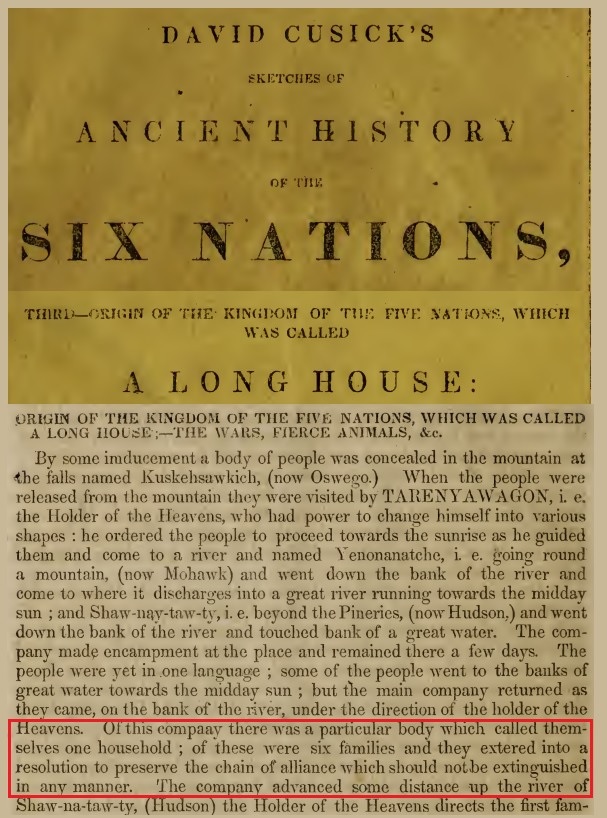
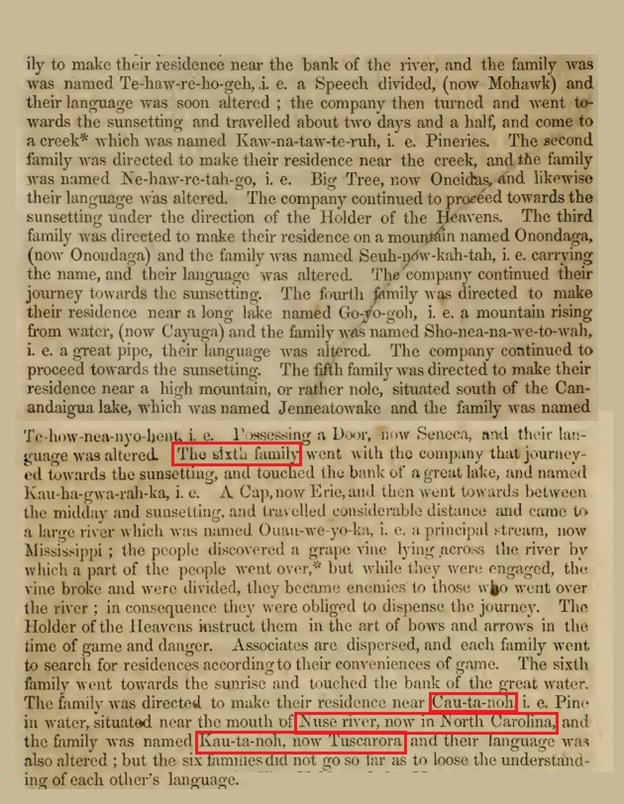
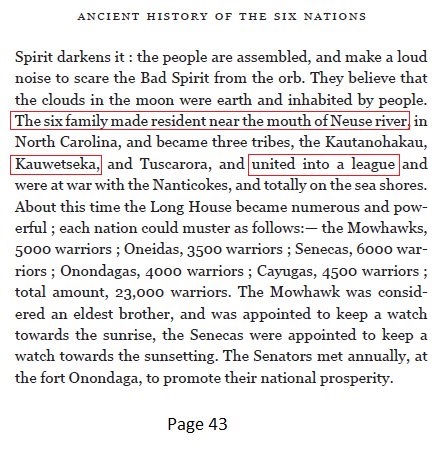
Note: David Cusick’s Sketches of Ancient History of the Six Nations (1828)
https://www.loc.gov/resource/rbc0001.2019gen03795/?sp=5
David Cusick’s book is the first account of Native American history and myth, written and published in English by a Native American.
Important figures in the history include Atotarho I, first king of the Five Nations, his successors Atotarho II–XIII, the war chiefs Shorihowane and Thoyenogea, Sauwanoo, Queen Yagowanea, and the allied or friendly Dog Tail Nation and the Kauwetseka.
Note: When they talk of the people crossing a grape vine that broke, they were talking of a
suspension bridge made of vines.
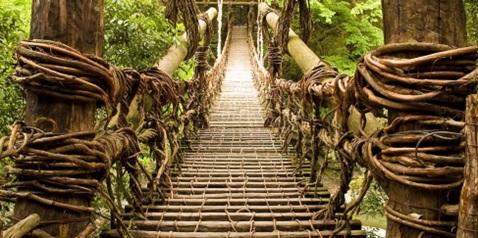
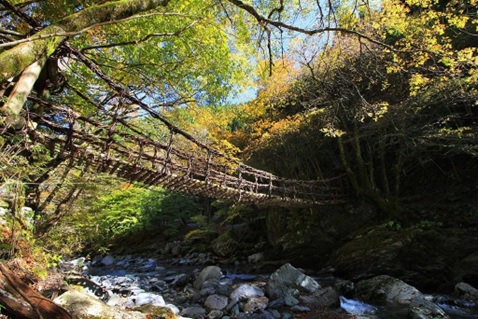
When Conquistadors from Spain came, they saw and they were astonished. They had never seen anything in Europe like the bridges of Peru. Chroniclers wrote that the Spanish soldiers stood in awe and fear before the spans of braided fiber cables suspended across deep gorges in the Andes, narrow walkways sagging and swaying and looking so frail.
Yet the suspension bridges were familiar and vital links in the vast empire of the Inca, as they had been to Andean cultures for hundreds of years before the arrival of the Spanish in 1532.
The Inca suspension bridges achieved clear spans of at least 150 feet, probably much greater. This was a longer span than any European masonry bridges at the time. The longest Roman bridge in Spain had a maximum span between supports of 95 feet. And none of these European bridges had to stretch across deep canyons.
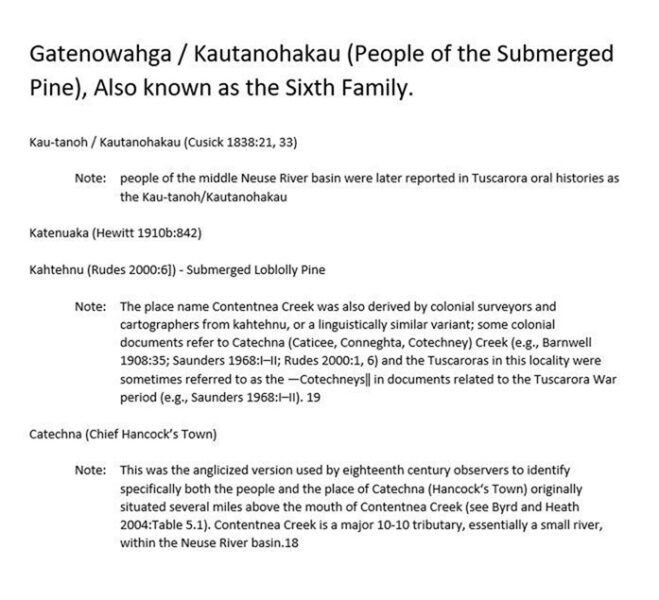
The following is a Tuscarora Oral Tradition/History recorded by William Byrd II, in his History of the Dividing Line Betwixt North Carolina and Virginia (1728). This Oral Tradition is similar in many way to the story of the Peacemaker. It’s interesting in that this Oral Tradition names the Gatenowahga / Kautanohakau (People of the Submerged Pine) as the Conechta Clan.
This oral tradition is kinda prophetic in that of the three original peoples that made up the sixth family, only the Tuscarora and Meherrin survived in name as a people.
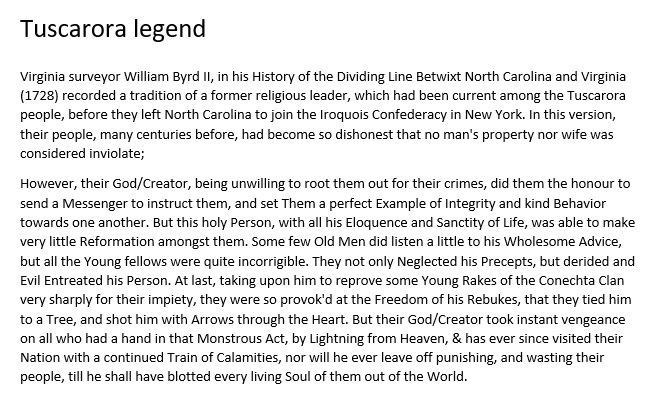
The Haudenosaunee (Original 5 Nations) claim the events leading to the creation of The Great Law of Peace date back to the late 12th century (around 1190 AD), while some western scholars suggest a later date of 1451 AD. Oral history says that the sixth family split off and eventually found it’s way to the East Coast before the Great Law of Peace was created.
This sixth family that split off would go on to become three tribes the Kautanohakau (People of the Submerged Pine-Tree), the Skaruren/Tuscarora (Hemp Splitters), the Kauwetseka/Meherrin (People of or in the Water).
Oral history says that the sixth family first arrived on the East Coast of Virginia/North Carolina in about the year 1300 AD. Oral history also says at that time they found a race of people that knew nothing of Maize (corn) and that they ate raw flesh.
It’s interesting to note that the word Tuscarora/Taskarude is of Siouan origin meaning literally “dry-salt-eater”. It’s interesting in that the people who the sixth family found when they arrived on the East coast were raw flesh eaters, these same people were probably Siouan.
By the time the Europeans arrived the Sixth Family known as Kautanohakau were made up of three tribes.
1. Kǎ’tě’nu’ā’kā’, Katenuaka, Ga-te-no-wah-ga, or Kautanohakau (“People of the Submerged Pine-tree”),
2. Akawěñtc’ākā’, Akawenteaka, Akawenchaka, Ag-wan-te-ga, Kauwetsaka, Kauwetseka or Cauwintch-AAga (“People of the Water”, this was also the autonym of the Kauwetsʔa·ka or Meherrin.)
3. Skarū’ren’, Skuarureaka or Sca-ru-re-ah-ga (“Hemp Spliters”), today known as Tuscarora.
After the sixth family was directed by Tarenyawagon (Holder of the Heavens) to settle near the mouth of the Gowtano/Cautanoh (Neuse) River, it was here that he left us and returned to our relatives in the North.
Our family (the Sixth Family) was originally one people, our name being taken by the
place in which we settled, this being Kautanohakau (People of the Submerged Pine-
Tree). From these people emerged two families, these being the Skaruren/Tuscarora
(Hemp Gatherers) and the Kauwetseka/Meherrin (People of the Water).
The sixth family always had a close connection and were known by some early historians as being one of the same. Some say they had their own League/Confederacy.
